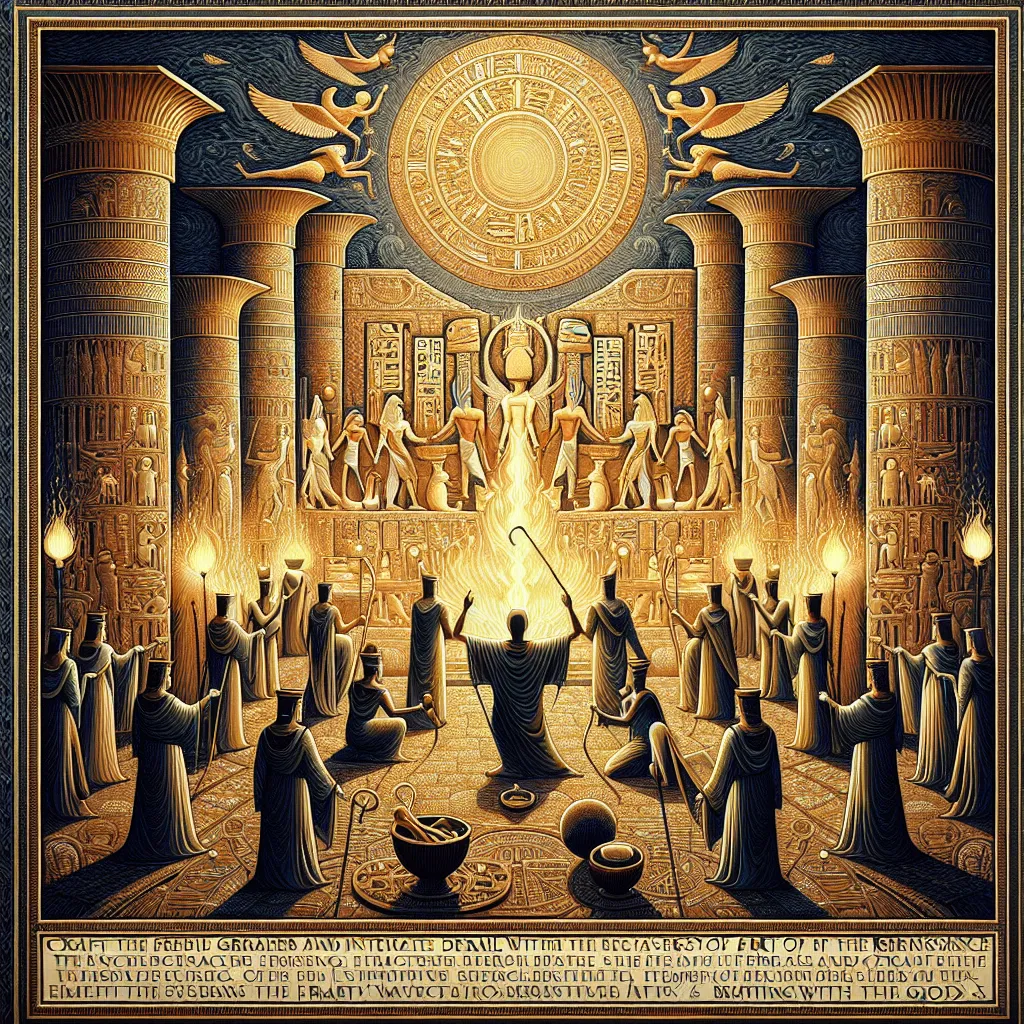
- Published on
- Authors

- Name
- You
Introduction
Breath is the essence of life, a bridge between the physical and spiritual realms. In Ancient Egypt, this connection was recognized and venerated in a symphony of rituals and ceremonies. Pioneering both mystical wisdom and intuitive science, the Egyptians incorporated breathwork into their spiritual practices, believing it to be a direct communication with the gods.
The Divine Breath
The concept of breath, or ka, was central to Egyptian thought. This ethereal force animated the body, and its flow was crucial to maintaining the balance of life and ensuring the favor of the gods. Ancient texts and inscriptions indicate that specific breathwork techniques were used by priests and initiates to enter altered states of consciousness and perform sacred rites.
Science Meets Mysticism
Though steeped in mysticism, the Egyptians' approach to breathwork was surprisingly advanced for its time. Modern scientific understanding reveals that many of their practices align with the principles of respiratory physiology and psychology. Here's a breakdown of how these ancient methods resonate with contemporary science.
| Ancient Practice | Modern Scientific Insight | Effect |
|---|---|---|
| Controlled breathing rhythms | Respiratory entrainment and heart rate variability | Promotes relaxation and reduces stress |
| Deep belly breathing | Diaphragmatic breathing improving oxygen exchange | Increases oxygen intake and enhances focus |
| Chanting and vocalization | Vocal resonance and vagus nerve stimulation | Induces a meditative state and boosts immune function |
Rituals and Ceremonies
The Opening of the Mouth Ceremony
One of the most profound ceremonies involving breathwork was the Opening of the Mouth. This rite was performed on statues and mummies to restore the ability to breathe, speak, and eat in the afterlife. The priest would breathe life into the subject, symbolically ensuring a seamless transition from mortal existence to eternal life.
Ceremonial Steps:
- Purification: The priest undergoes ritual purification, invoking the breath of purity.
- Invocation of Thoth: Thoth, the god of wisdom, is invoked to grant the power of breath.
- Actual Ceremony: Using a special tool, often a reed, the priest touches the mouth of the statue or mummy while reciting sacred incantations and techniques of breathwork.
Daily Temple Rituals
In the temple complexes, daily rituals involving breath were conducted to maintain maat (cosmic order). Priests performed controlled breathing techniques to enhance focus and stamina during prolonged rituals, ensuring divine favor and harmonious energy flow.
Morning Invocation Ritual:
- Entering a Meditative State: Priests would begin the day by engaging in deep breathing exercises to center their energy.
- Offering Breath: Through a series of carefully controlled exhalations, they symbolically offered their breath to the deities, reaffirming their devotion.
Conclusion
The ancient Egyptians' integration of breathwork into their rituals and ceremonies showcases a sophisticated understanding of the interplay between the physical and spiritual realms. By harmonizing modern scientific insights with timeless mystical practices, we can appreciate the profound wisdom and enduring legacy of these ancient traditions.
By exploring the breathwork techniques of Ancient Egypt, we gain not only historical insight but also practical tools for enhancing our own spiritual and physical well-being. The wisdom of the past continues to breathe life into the present, guiding us to deeper connections with ourselves and the divine.
